Released in mid-1996, NEC’s DSE series of hard drives were their second-last original in-house HDA design. By mid-1997, NEC had signed a deal with IBM to produce drives designed by IBM under both NEC and IBM branding. Meaning, this late-stage series of original NEC-designed drives only lasted for just over a single year in production. Any IBM branded drives you see which state “Made for IBM in the Philippines” automatically dictate that they were made for IBM by NEC. Sometimes, these can also be found branded under NEC labelling, for example with a failed Deskstar 40GV also featured here.
By late 2001, NEC had decided to exit the hard drive industry completely. The 60GXP series was NEC’s last contribution to the world in terms of hard drive production. A rather sad outcome, to say the very least.
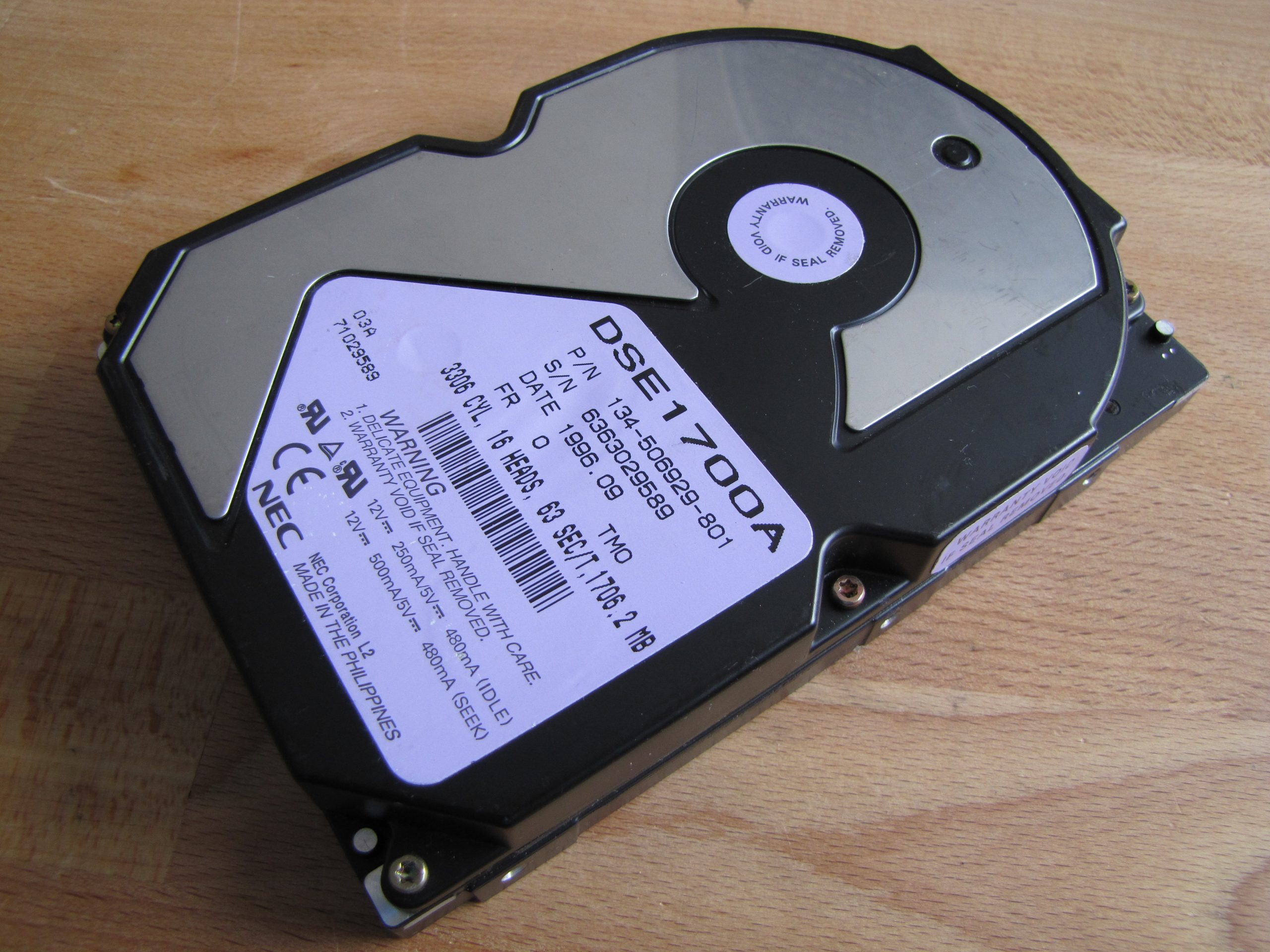
Drive Attributes ------------------------------------- NEC DSE1700A ------------------------------------- Capacity 1700MB Mfc Date 1996-09 Format 3.5" Interface PATA Platters 2 Heads 4 RPM 5200 Origin Philippines (TEII) -------------------------------------
NEC released the DSE series in four capacities, these being 1340MB (DSE1340A), 1700MB (DSE1700A), 2010MB (DSE2010A) and 2100MB (DSE2100A). While this one is the mid-range capacity of the bunch, the 2100A has a rather interesting 3 platter, 5 head layout. It begs the question as to why NEC didn’t commit to an almost 3GB drive, but it is what it is. The DSE2010A really was quite the strange move. (edit: apparently the DSE2550A does indeed exist, being 2550MB!)
The “A” suffix dictates that these drives came with an IDE interface. NEC also released these in SCSI-50 format, in the exact same capacities, but with an “S” as the suffix letter. (e.g. DSE1700S) However, it’s important to note than only the DSE1700 and DSE2100 came in a SCSI interface option.

NEC initially only produced drives in Japan, but by mid-1995, most of their consumer drive production was subcontracted to Tsukiden Electronics Industries, Inc. (TEII) in the Philippines; a deal which began in 1988. As a result, the DSE series can only be found as being made in the Philippines, as opposed to in their homeland of Japan. The rather pretty lavender coloured label stands out in the sea of sterile white labelled drives.
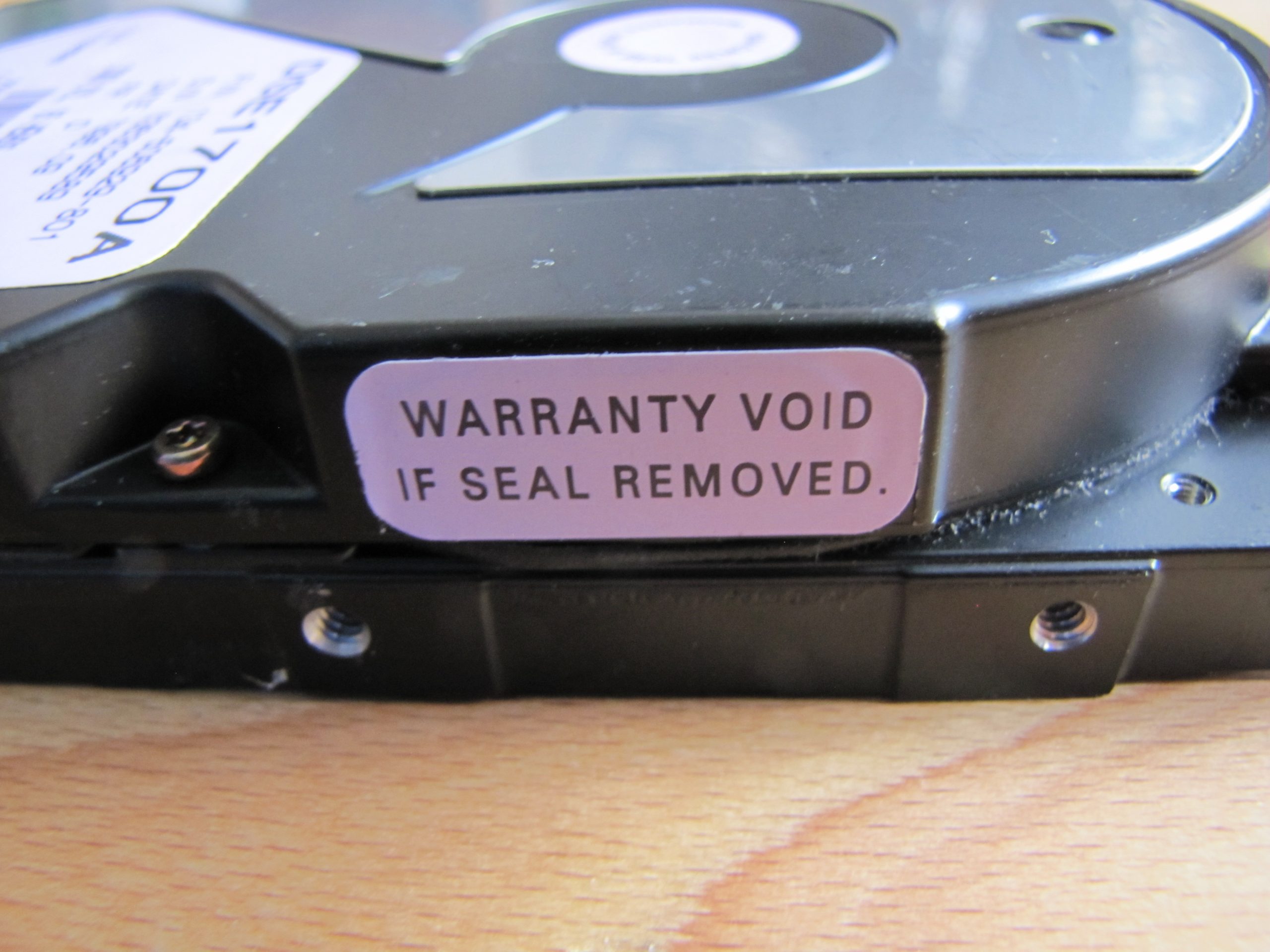
The general construction of this drive is somewhat reminiscent of Fujitsu drives produced in the same timeframe, with a single cast top-cover bolted onto a flat plate. The drive is quite heavy, but based on my previous experiences with NEC drives, they aren’t particularly the most reliable. It’ll be interesting to see how this one holds up.
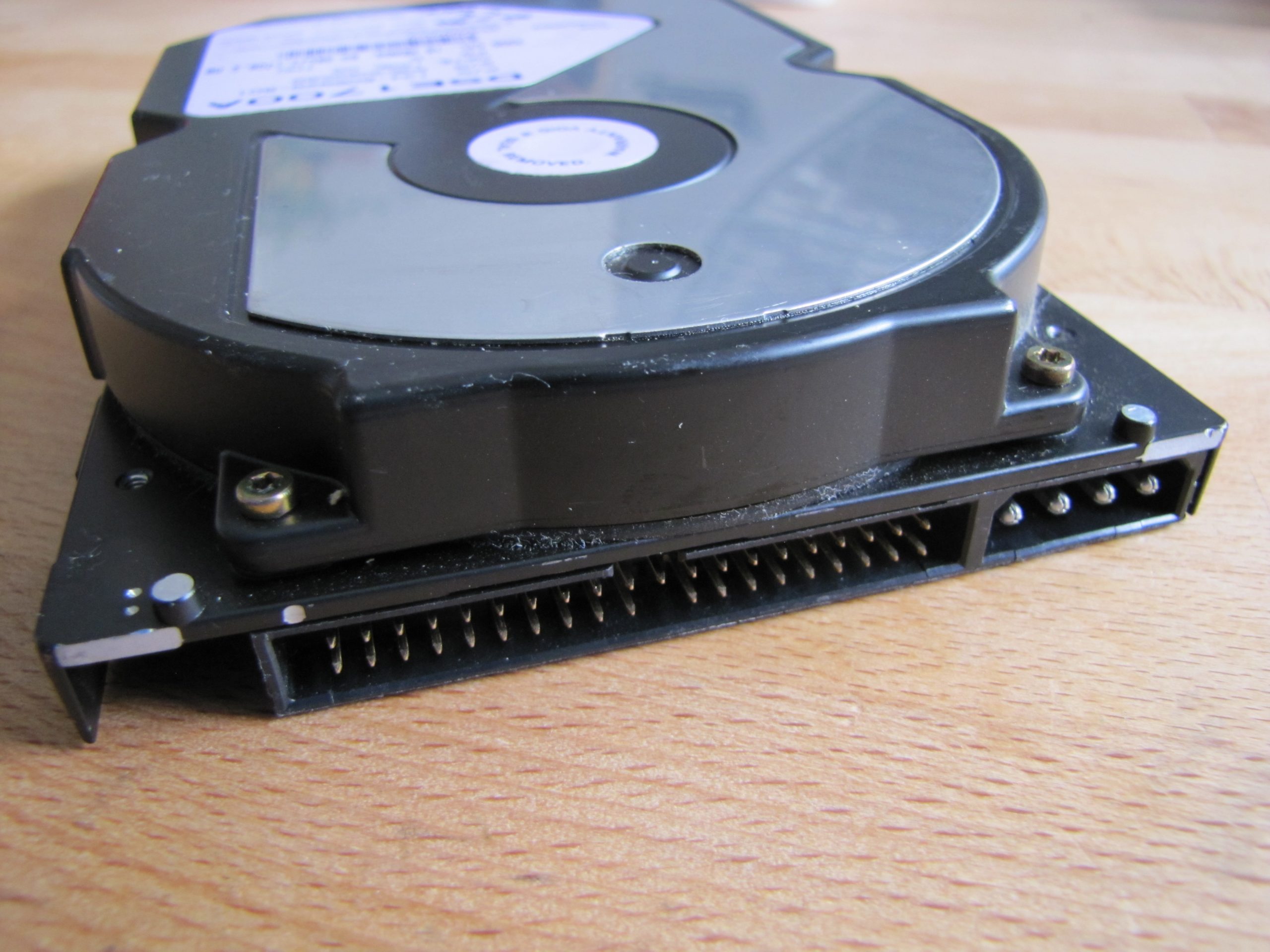
There’s nothing fancy here. The drive has standard Molex and PATA connections. The rubber seal seems to be somewhat of a fluff magnet, as it’s practically impossible to remove any from it.
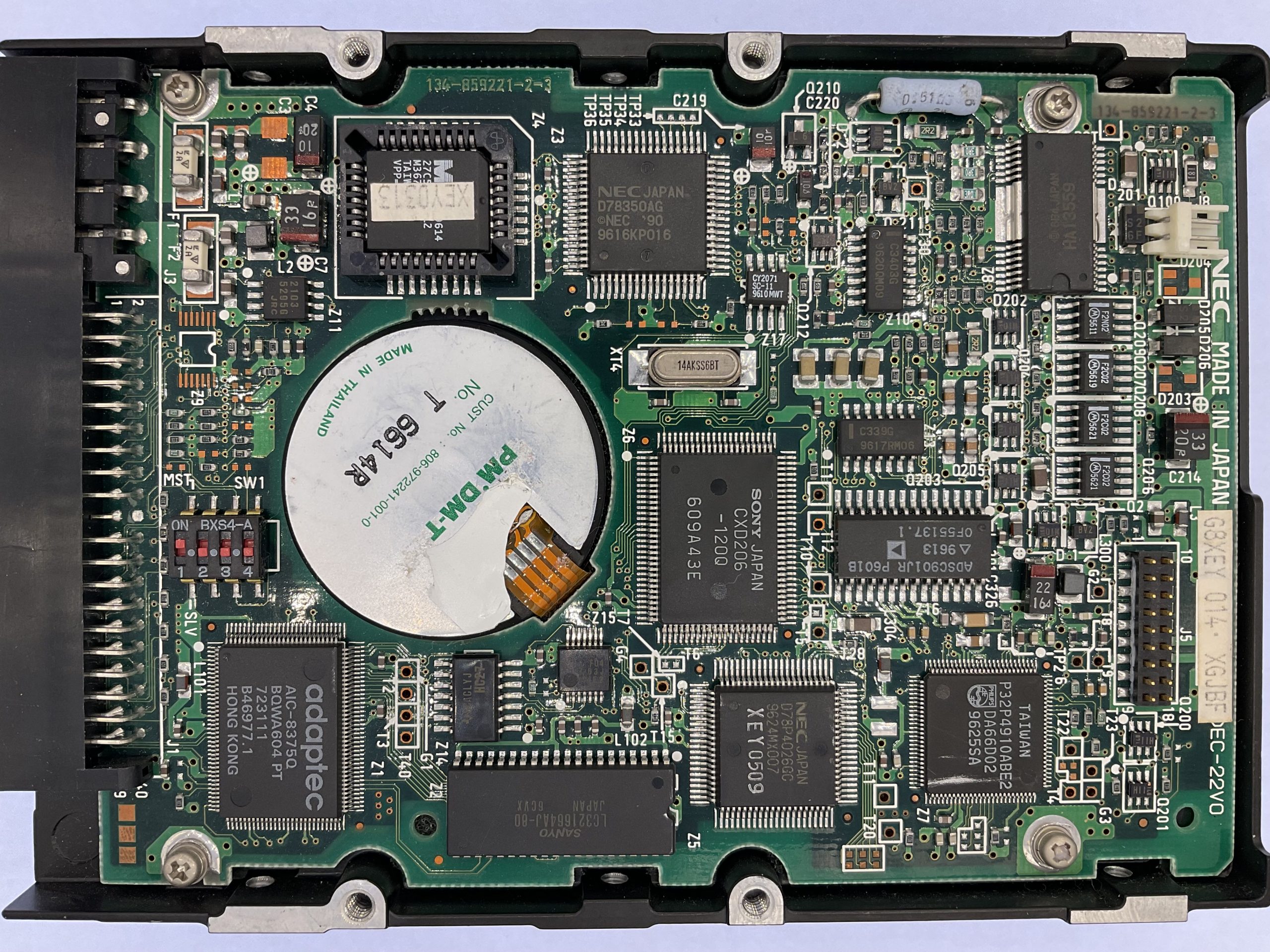
NEC drives have had consistently well laid out PCB designs. While the major assembly of the drive itself was manufacturered in the Philippines as stated above, the PCB’s on these drives remains to be procured from Japan. These PCB’s remain to be relatively similar to their earlier drive designs, such as the D3711, D3746 etc. There has certainly been some slight consolidation.
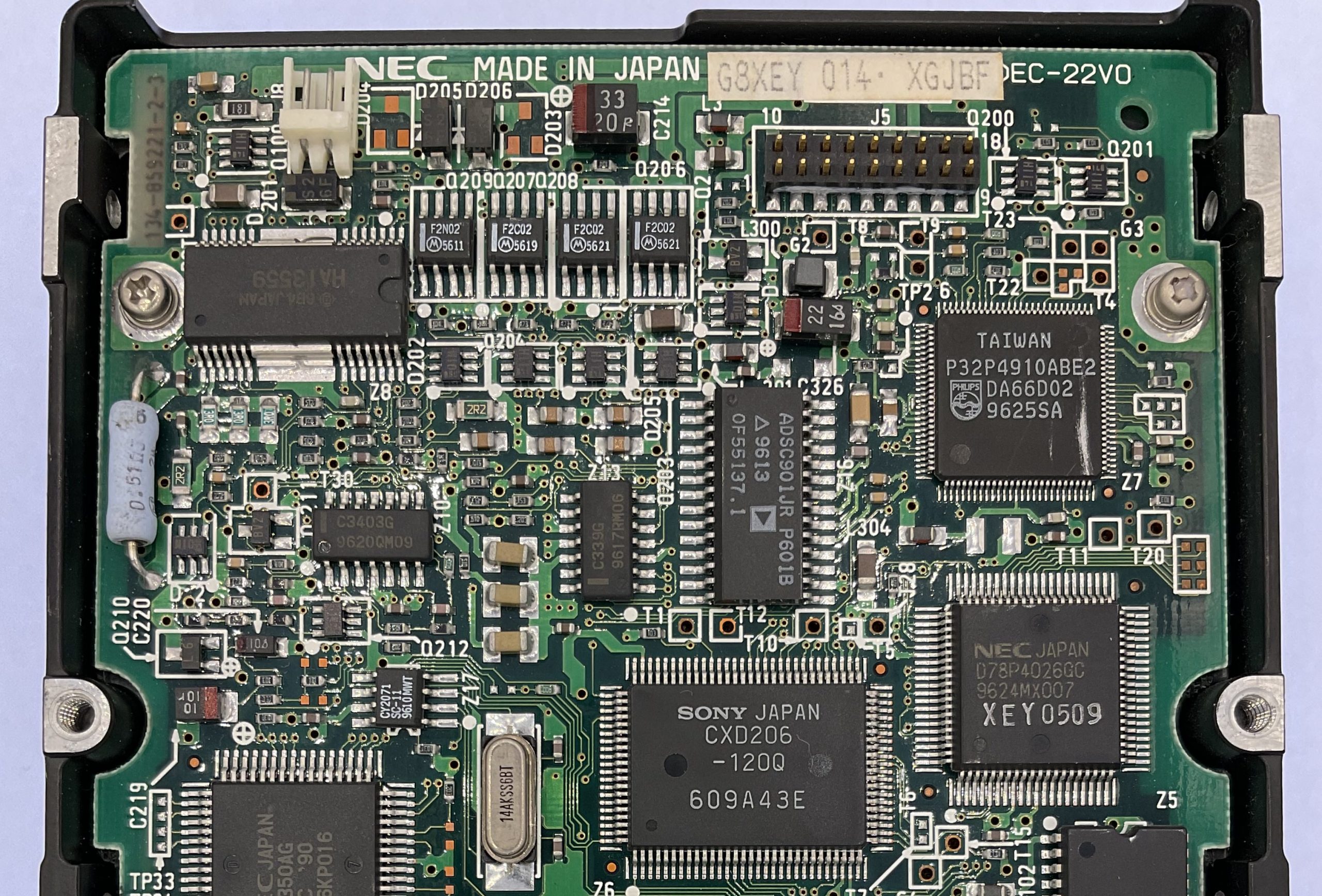
NEC have no problem using any brand of IC they can get their hands on. Although, it’s no surprise that many of the controller logic IC’s are produced by NEC themselves.
An external LED-header is present, with the following pinout:
J8 LED Connector
----------------
2 1
+--------+
| | | |
+--+--+--+
++++-++-++
+++-++-+
| +---- Anode Side
+-------- Cathode Side
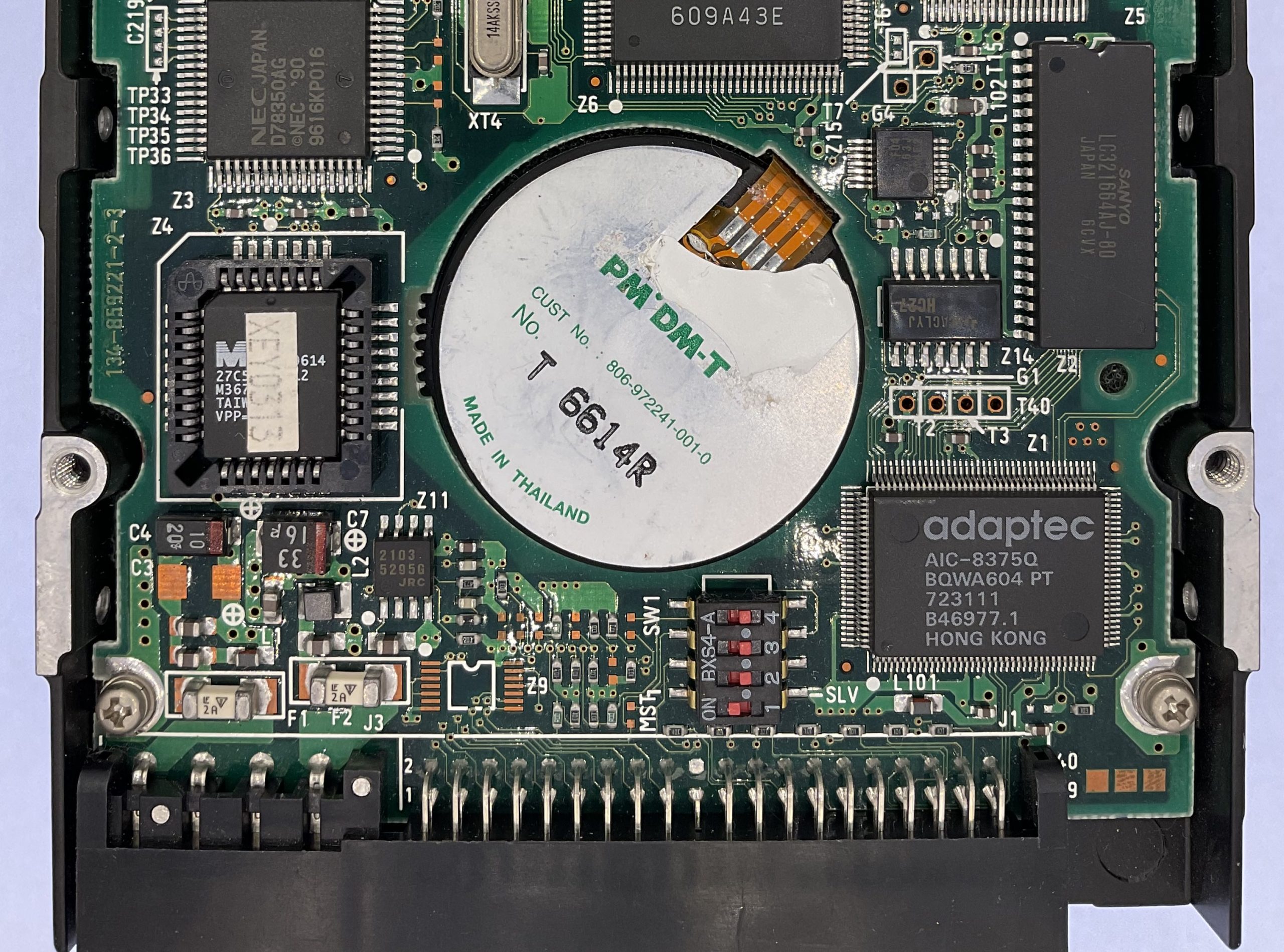
The spindle motor manufacturer is initially concealed. I pulled off the sticker and confirmed that it was manufactured by Precision Motors Deutsche Minebea (PM DT). These days, they’re known as MinebeaMitsumi, which is a merger between what Minebea was (PM DT) and Mitsumi. I assume it was cheaper than any domestic motor brands for NEC at the time, bizarrely.
Switching between master and slave modes on this drive involves a rather interestingly positioned switch bank. The pinout corresponds to the following:
SW1
+---------------+ON
|+-+ +-+ +-+ +-+|
||x| |x| |x| |x||
|+-+ +-+ +-+ +-+|
+-1---2---3---4-+OFF
| | | +-------------- ALWAYS SETS OFF
| | +------------------ ALWAYS SETS OFF
| +---------------------- CSEL (Cable Select)
| ON - effective (all other => OFF)
| OFF - ineffective
+-------------------------- M/S
ON - MASTER
OFF - SLAVE
Now that we’ve had a look at the drive, it’s worth mentioning the strange nature these drives seem to possess. For starters, they certainly have their quirks.
When I first booted this drive up after having had it in storage for so long, it really was in a sorry state. Everything refused to run and the drive seemed dead, it was even relegated to what I call the “sin-bin”, which is a box full of dead or nigh-unusable drives from my “collection”. It joined several other earlier NEC drives with similar behavioural patterns.
Luckily, after some troubleshooting, I was able to get this one rolling again! Somehow it was formatted to have a total capacity of 3.7GB, so something at some point really went wrong. Nonetheless, running the drive in CHS mode, formatting it, then switching back to LBA mode 4 and formatting it again fixed the issue entirely.
It’s also worth mentioning, these drives seem to have issues with some IDE controllers concerning parameter auto-detection. Of the five machines I tested this drive in, only one of them grabbed the correct values. The others all required manual intervention. Ironically, the only one that did it correctly used a SiS chipset, nothing particularly high-end.
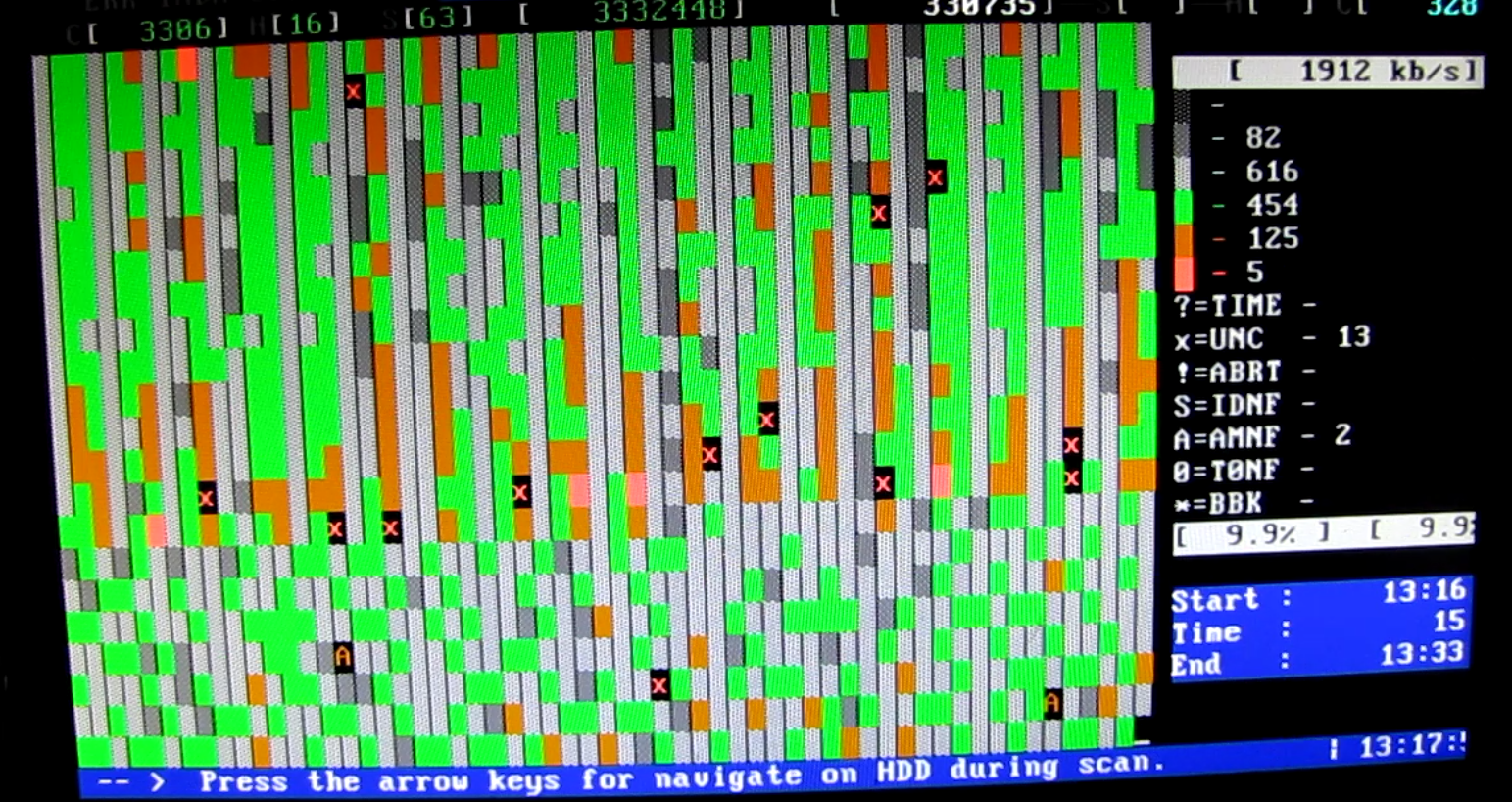
Saying this drive is in bad health would be an understatement. I didn’t even bother finishing the scan, since the first 30 seconds told the entire story. While the drive is littered with both bad and slow sectors, it has been holding up just fine with several Windows 98 installations and a few games. It’s certainly not the first drive I’d grab out of the box to use with an old machine, but it works.
Sadly, this has been a consistent issue with NEC drives in my experience. Most drives I see from NEC are either completely toast, or display similarly poor scan results. My total for dead NEC drives is currently standing at 5, not to mention ones I no longer own.
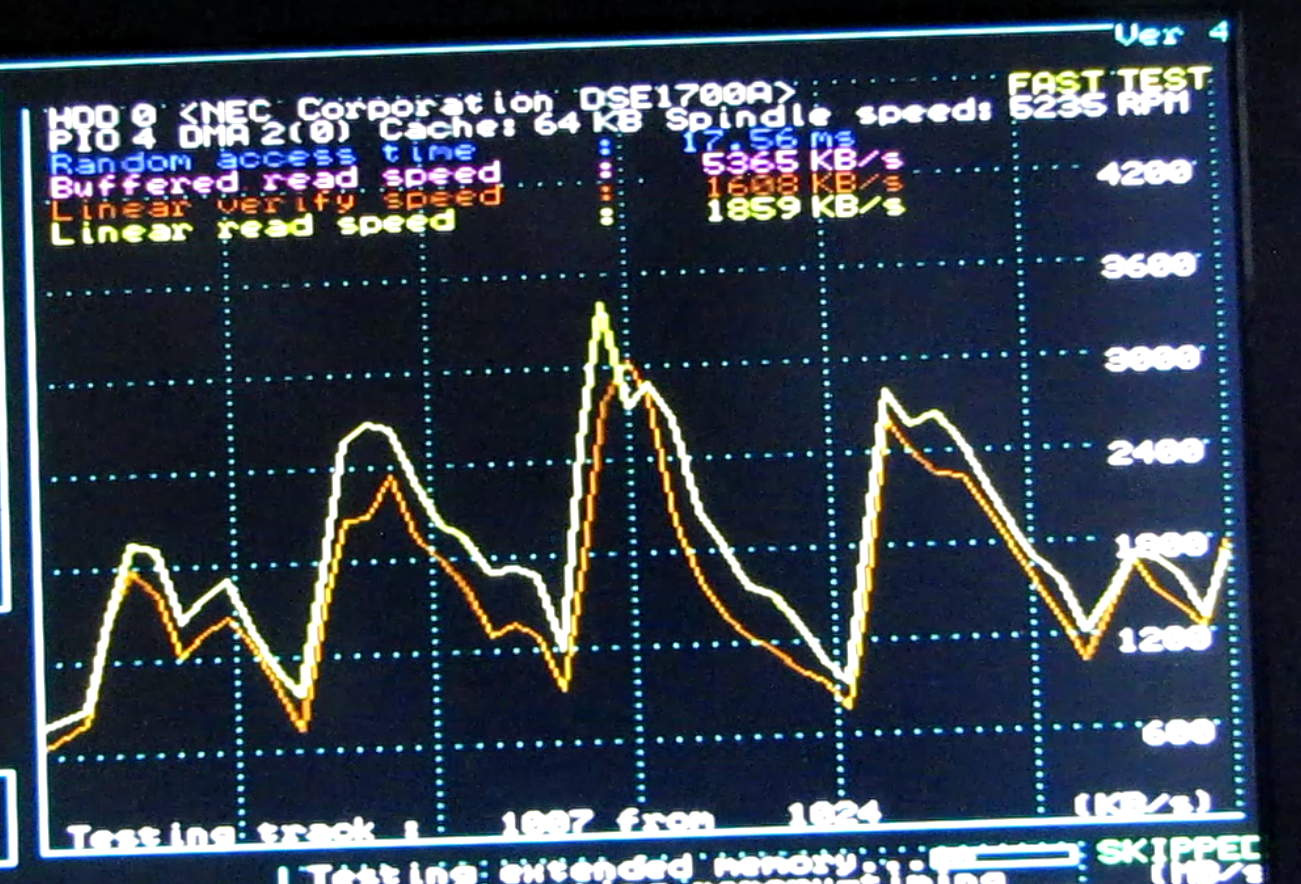
Those familiar with Speedsys are probably wondering why half the benchmark tests are missing. To be honest, it’s a rather confusing error that replicates itself among multiple machines, being a particular quirk of NEC models.
While the machine itself automatically detects the drive parameters correctly, Speedsys doesn’t seem to like this one at all and completely throws a nut. Interestingly, this is also an issue with Spinrite v6.0, but not with v5.0.
Either way, NEC’s late-stage attempt in hard drive design was certainly an enlightening one. It’s a shame NEC drives seem to be much rarer than most competing brands from the time. This doesn’t take into account that they weren’t very common outside of Asia, regardless.
If you missed the video I made on this drive, you can find it here: